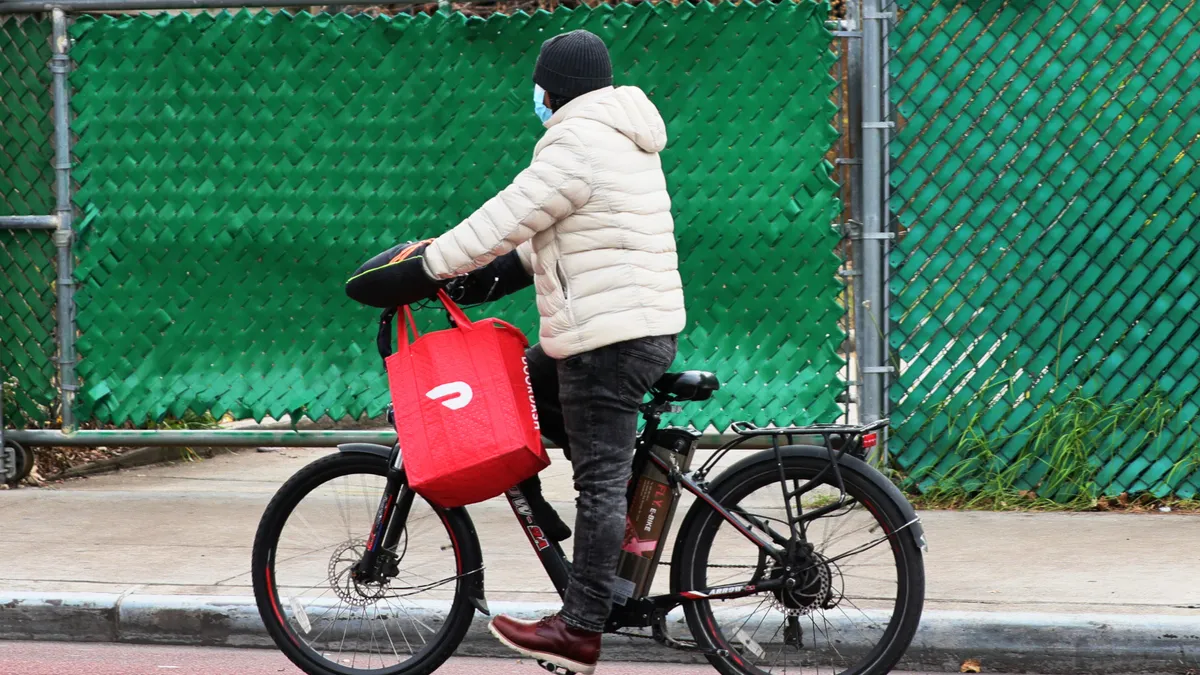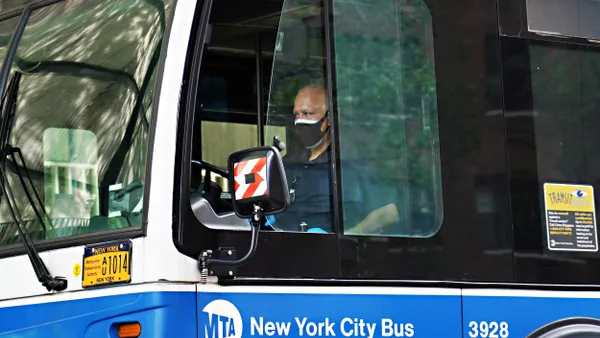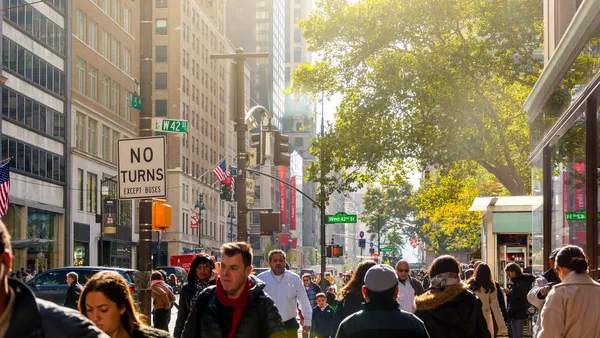Dive Brief:
- DoorDash is introducing a worker reward program in New York City that gives highly rated and highly productive workers early access to scheduling, as well as the potential to earn weekly bonuses.
- The change makes DoorDash delivery work more similar to a traditional, full-time job with predictable hours for those high-frequency Dashers, at the expense of flexibility for low-frequency, highly contingent workers.
- DoorDash is also changing its compensation model starting March 4 after altering its tipping structure and hiking consumer fees in the city in response to a New York City law that requires delivery companies to pay an hourly minimum of $17.96.
Dive Insight:
DoorDash said its steeper fees in New York City led to a $3.5 million drop in sales for local DoorDash merchants and 200,000 fewer orders over the last few weeks. The company didn’t share a specific time frame for this decline, and didn’t respond to a request to confirm how many merchants it works with in The Big Apple, making it difficult to estimate the significance of this sales slump.
However, DoorDash’s website says it has 7,245 restaurants in New York City, but given the company’s presence in other verticals, ranging from pet stores to florists, the specific portion of those losses impacting restaurants is impossible to measure with the numbers shared by DoorDash, if there has been any drop-off at all.
The New York City Department of Consumer and Worker Protection said in an email to Restaurant Dive that it is monitoring compliance with the new pay regulations through reports submitted by the delivery apps. The city department said the data included in those reports show the volume of deliveries in the city has remained steady since the wage increase took effect.
Steeper fees are necessary, DoorDash claims, to offset the cost of New York City’s minimum wage requirements for delivery couriers. DoorDash will now pay its workers $17.96 per hour of active time before tips, a departure from the “Alternative Method” allowed under the rule it had previously used, which compensated workers only for trip time but at a higher rate. The active time rate will rise to $19.56 on April 1, which could translate to even higher fees.
The new scheduling perks for high-frequency Dashers may help retain top couriers. But the offer undermines the flexibility DoorDash says is its base value proposition for workers, which could further disrupt the company’s business model.
“We know Dashers highly value flexibility, and we are disappointed that these changes will result in less flexibility and fewer earning opportunities for many Dashers. Simply put, many Dashers will no longer be able to work whenever they like and end up earning less money as a result,” DoorDash wrote in its press release.
It’s unclear, however, how much of DoorDash’s declines in New York City can be tied to the ripple effects of the city’s minimum wage requirements versus general traffic slides experienced by many restaurant brands in recent months. Seventy-nine percent of restaurants surveyed by the National Restaurant Association reported lower YOY traffic in January, for example. The company didn’t share specific sales data from other East Coast cities with similar weather conditions to New York City, either, which could establish a valid baseline for comparison.














